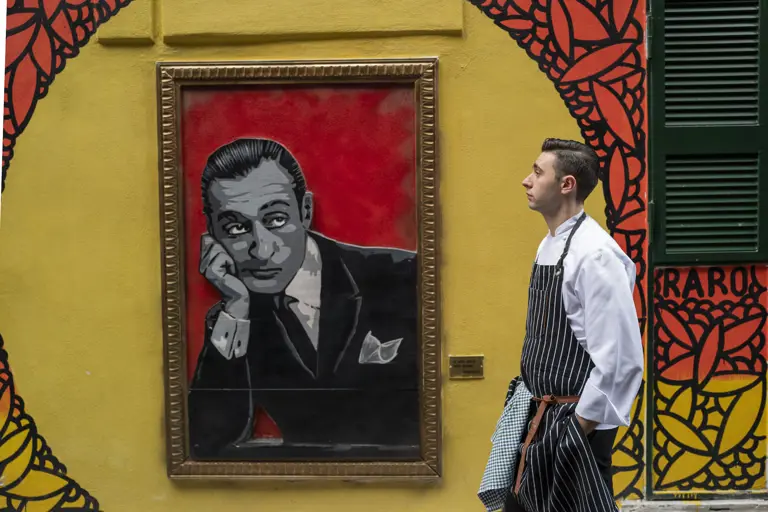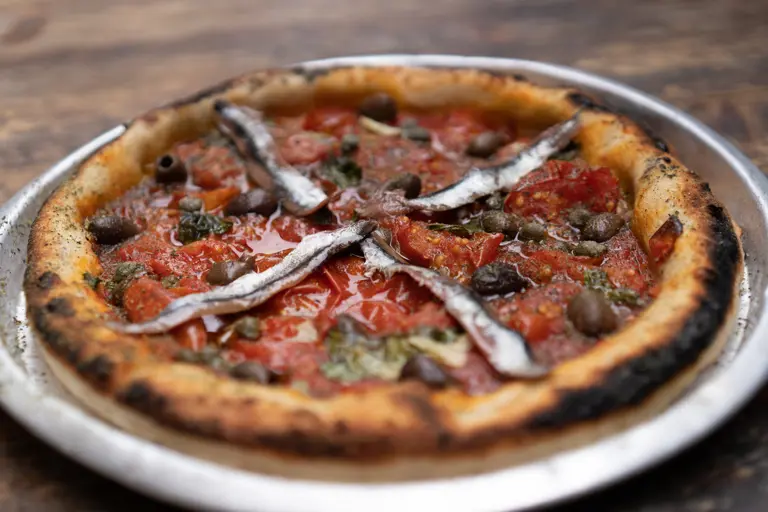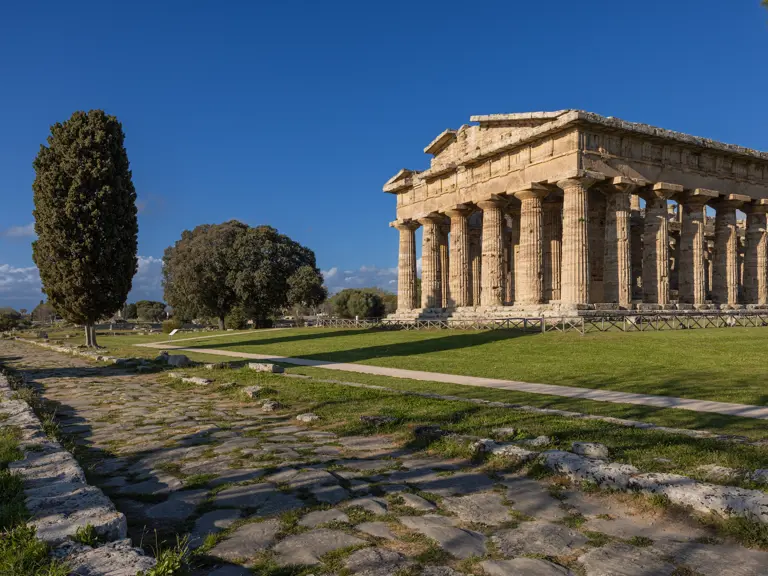LE SIRENUSE GUIDE: RIONE SANITÀ IN NAPLES
05.05.2022 NAPLES & AROUND
Perhaps they had decided to take a short cut back down into the centre from the Capodimonte park and museum – and perhaps they were regretting their decision as they glanced nervously around. Back then, like certain parts of New York in the 1980s (or more recently, come to that), this colourful and chaotic district was something of a no-go area.
Paradoxically, in the 17th and 18th centuries, La Sanità was a kind of Neapolitan Beverly Hills, a peaceful garden suburb where noblemen built sumptuous townhouses like Palazzo Sanfelice or Palazzo dello Spagnuolo (a detail of which is shown below). Both designed by flamboyant architect Ferdinando Sanfelice, respectively in the 1720s and 1730s, these two palaces with their delightful ‘falcon wing’ double ramp stairwells, though now rather dilapidated, can still be admired today. Palazzo dello Spagnuolo has been used as a film set more than once – notably for Vittorio de Sica’s The Last Judgement and John Turturro’s Neapolitan music documentary Passione.
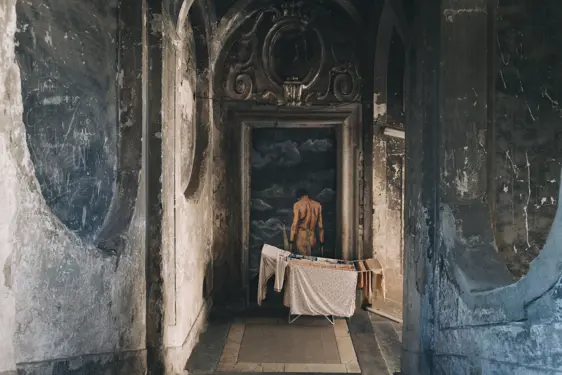
View
Over the following decades, as Naples’ population exploded and urban sprawl pushed the city boundaries ever further inland, La Sanità morphed from aristocratic buen retiro to dense residential maze, where poor families lived in crowded apartments and tripe sellers plied their trade in the street (there are still, glory be, a couple of these left today). Soon enough, La Sanità had become a stronghold of the Camorra, the Neapolitan Mafia, and by the time the great Neapolitan comic actor Totò was born here in 1898, it had acquired the reputation of being one of the city’s toughest boroughs – though it was also a place of neighbourhood solidarity, where people helped each other out through the lean times.
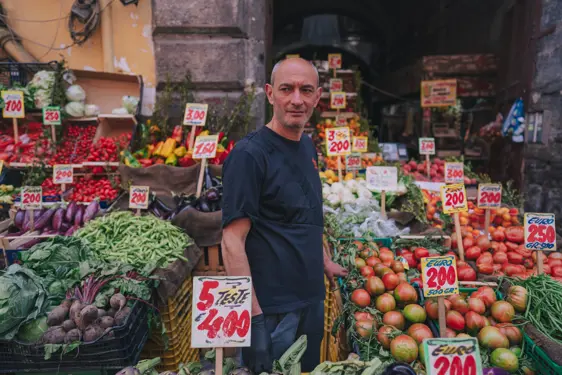
View
Today, however, La Sanità is turning itself around thanks to the efforts of a mix of private and institutional actors who feel a deep connection with the area and are determined to show that its energy – a quality the district never lacked – can be harnessed in positive ways. Increasing numbers of visitors have begun to explore this fascinating urban warren in which crumbling Baroque palazzos jostle for space with jerry-built tenements festooned with washing, where colourful, noisy street markets unfold and shrines to the Virgin are lovingly tended. Perhaps more than any other part of the city, La Sanità is Naples distilled.
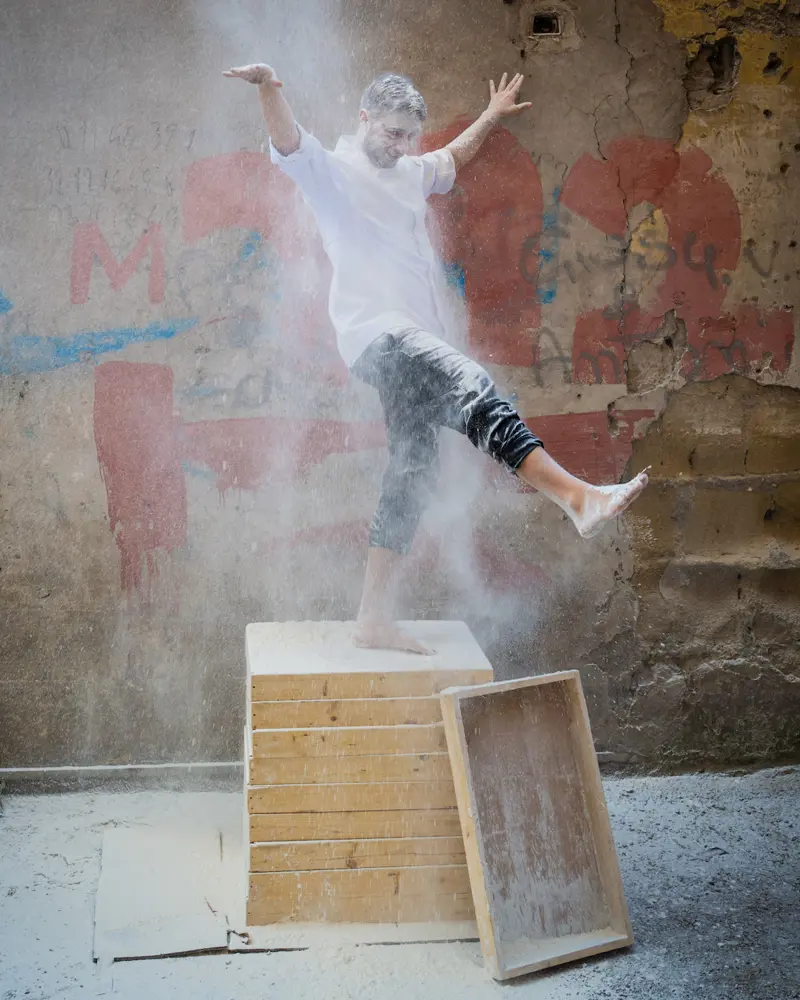
In Rione Sanità, you understand what Italian writer Curzio Malaparte meant when he wrote “Naples is a Pompeii that was never buried”. The district was built on top of an area honeycombed with ancient Christian and pagan catacombs. Two of these, the early Christian era Catacombs of San Gennaro and San Gaudioso, were recently opened to guided tours, thanks to the efforts of a campaigning local priest, Don Antonio Loffredo. The guides are young people from the district who are supported and trained by the non-profit cooperative that runs the tours, La Paranza. La Paranza’s chief organizer, Vincenzo Porzio – himself a local lad – tells the Journal that “we’re doing two things here: restoring dignity to beautiful but abandoned places, and restoring dignity to a once-abandoned quartiere and the people that live here”.
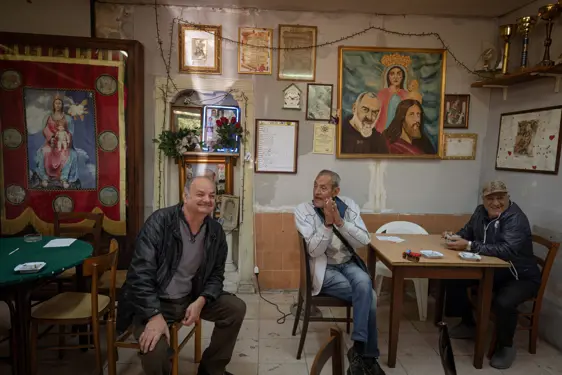
View
The contrast between the La Sanità of the past and the present, between its dark and light sides, was the subject of a partly autobiographical novel, Nostalgia, by the late Ermanno Rea, who grew up in the quartiere before leaving to make a career as a journalist in Rome and Milan. Published posthumously following Rea’s death in 2016, the book has now been made into a film of the same name by Neapolitan director Mario Martone, which will premiere in competition at the 2022 Cannes Film Festival at the end of May.
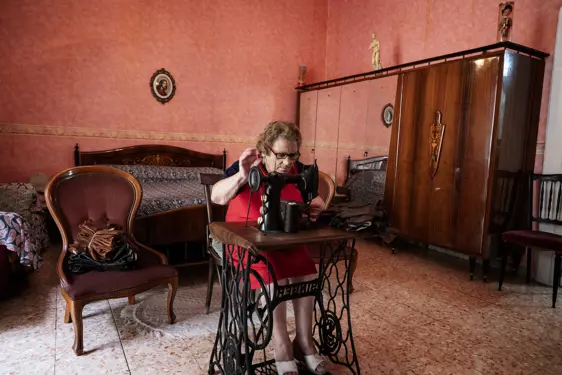
View
The rione (the Italian term for an inner-city district) is home to a surprising number of cottage industries hidden inside its houses – like remarkable glove ‘factory’ Omega, founded in 1923, where women work on ancient sewing machines while coffee bubbles on the stove. It all sounds pretty small-scale and local, but the company’s products are second to none, and their gloves are sought after by fashion houses from Dior to Chanel and Yves Saint Laurent. But they also sell direct – and a visit to Omega is not to be missed. It’s in places like this that the new spirit of La Sanità shines forth.
Photos © Roberto Salomone
Le Sirenuse Newsletter
Stay up to date
Sign up to our newsletter for regular updates on Amalfi Coast stories, events, recipes and glorious sunsets
